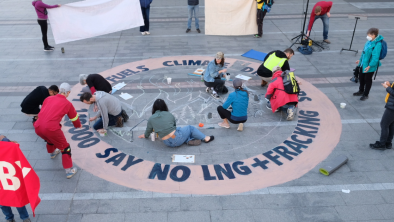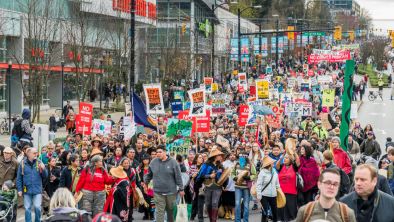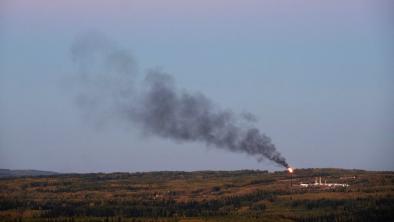Alex Neve and Sarah Morales: Site C dam still far from ‘point of no return’
Vancouver Sun
Last month, the B.C. Supreme Court handed the Horgan government a victory that may prove much more costly than a defeat.
The West Moberly and Prophet River First Nations had asked the court to temporarily suspend construction of the Site C dam, or at least protect critical areas of the Peace Valley while their still unresolved Treaty rights challenge is being considered. On Oct. 24, Justice Warren Milman dismissed the injunction application entirely. This is exactly what the provincial government and B.C. Hydro had asked the court to do.
At the same time, the judge ruled that the First Nations’ legal challenge can continue with the possibility that, if the First Nations are able to prove their case, the dam could be stopped before plans to flood the Peace River Valley are completed.
In other words, the court told the province, if you so choose, you’re free to continue sinking billions of dollars into a project you might never be allowed to complete.
Many commentators have zeroed in on Milman’s statement that the First Nations case against Site C is “weak.” Critically, however, the injunction process only required the First Nations to bring forward enough evidence to establish that they have a “serious” case — which the court acknowledged they did. Much more evidence and testimony will be heard in the court during the four-year trial that is still to come.
Significantly, a number of legal scholars — including John Borrows, whose writing on the Constitutional protection of Indigenous peoples’ rights is frequently cited by the courts — have commented that while First Nations always face an uphill struggle to protect their rights, the West Moberly and Prophet River First Nations actually have a strong case that flooding the Peace Valley is incompatible with protection of their treaty rights.
The responsibility to uphold treaty rights is part of the Canadian Constitution and as such transcends the policies and priorities of the government of the day. The Peace River Valley is one of the few areas left in northeast B.C. that has not been irreparably transformed by industrial development. It is also crucial to the history and cultural traditions of the Dunne-Za and Cree peoples, while sustaining many of the critical plants and wildlife on which they depend.
If First Nations are able to prove that flooding the Peace River will prevent the meaningful exercise of their hunting, fishing and trapping rights, the onus will then shift to the province to prove that a violation of these rights is justified. Meeting the strict requirements for justification of treaty rights infringement under Canadian law may be all but impossible to do given that the B.C. Utilities Commission has already determined that there are less destructive alternatives available at equal or lower cost than completing Site C.
Under the circumstances, one would expect that a prudent government would be reluctant to risk investing even more money in Site C until they know for sure whether the project can ever be completed. Unfortunately, prudence has never been part of the picture when it comes to the Site C project.
Around this time last year, just weeks before announcing his government’s support for continued construction of Site C, Premier John Horgan publicly acknowledged the ultimate fate of the project might be determined in court. The premier had a chance at that moment to make good on his promises to respect the rights of Indigenous peoples. But instead of declaring that the outstanding issue of possible treaty rights violations needed to be resolved before spending another dollar on Site C, the premier embraced his predecessor’s claim that the project had already been pushed to “the point of no return.” Then, when First Nations launched a new legal challenge, Horgan further alienated First Nations leadership by unleashing government lawyers in an attempt to reinterpret and undermine the very rights he had promised to champion.
The fact is, however, that the Site C dam is still very far from the point of no return. The project is far from even the halfway mark to completion and many questions have been raised about the ability of B.C. Hydro to finish the project on time or on budget even without a court-ordered injunction. Critically, as the examples of the Trans Mountain and Northern Gateway pipelines clearly demonstrate, courts can and will shut down major resource development projects — even projects enthusiastically backed by federal and provincial governments — if Indigenous peoples can establish that these governments have failed their Constitutional responsibilities.
A court-ordered work suspension would have offered the Horgan government a face-saving way out of the reckless gamble of continued investment in Site C. The premier and his cabinet — indeed the whole province — may come to regret the fact that their lawyers prevailed in this first skirmish in the courts.
Alex Neve is secretary-general of Amnesty International Canada. Sarah Morales is an associate professor in the University of Victoria’s Faculty of Law and a member of the board of directors of Amnesty International Canada.


